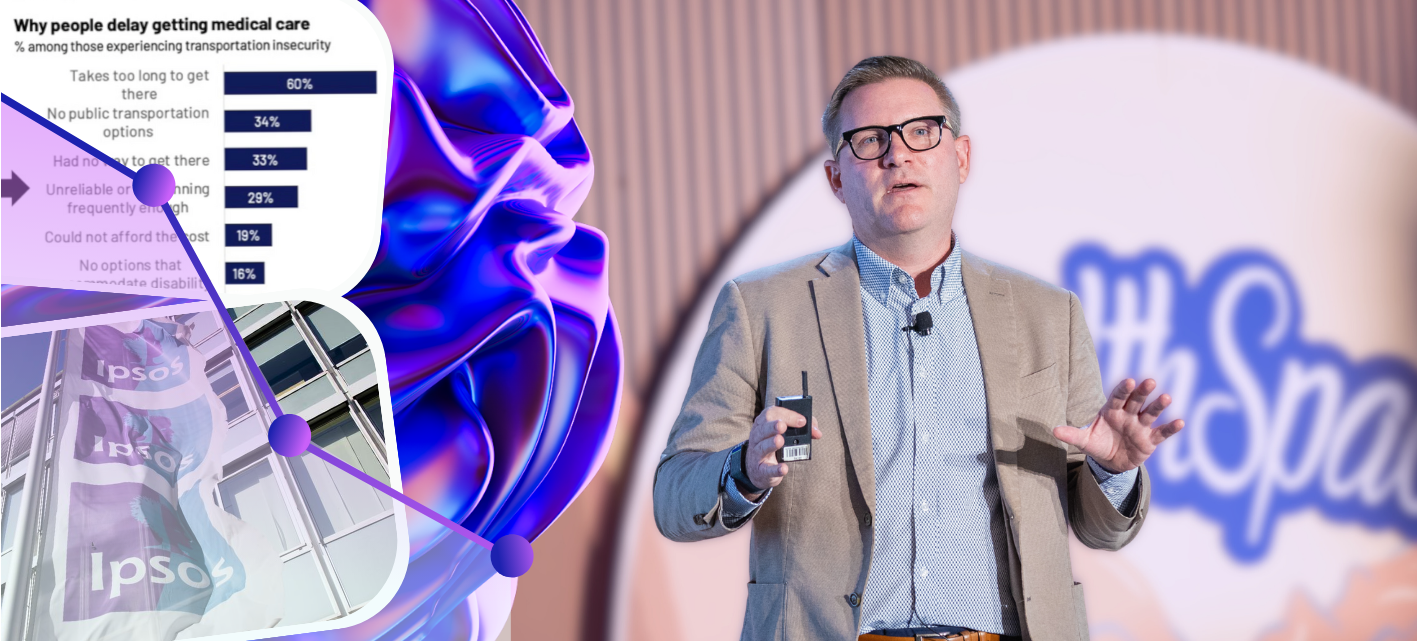When John Boerstler took the stage at HealthSpaces, he didn’t bring sweeping theories or vague predictions. He brought something facilities officers rarely get: new survey data on what patients actually care about — and how those priorities often clash with what healthcare leaders think matters most.
As the former Chief Experience Officer at the Department of Veterans Affairs, Boerstler helped transform patient experience across 1,500 facilities. Now, as EVP of Public Sector at Ipsos, he’s bringing that same data-driven mindset to the broader healthcare system — helping leaders challenge their assumptions and make smarter planning decisions.
His core message? If you’re not designing around real patient insight, you’re probably designing for the wrong thing.
Parking Is Still King, But It’s Not That Simple
While “parking is still king, queen, prince, duke — whatever you want to call it,” Boerstler emphasized that the story doesn’t end there. His team’s data shows that younger and lower-income Americans increasingly rely on public transportation or rideshare services. That shift should influence how leaders approach long-term planning. “How do you shape your construction planning around that if you need less parking, or more access to public transport, or ride share?” he asked.
The key takeaway: it’s not about eliminating parking — it’s about designing for a broader spectrum of access needs.
Lobby Design as a Cultural Signal
Boerstler’s findings around lobby design challenged some major assumptions in the room. While it’s easy to overlook lobbies as merely functional, the data revealed that African-American patients are more than twice as likely as white, non-Hispanic patients to say that lobby design significantly impacts their healthcare experience (57% vs. 26%).
Initially surprised by the gap, Boerstler asked his team to double-check the data. “I asked the team, ‘Do we need to rerun this just to make sure?’ Sure enough, this came up as a really important issue.” For healthcare leaders, this isn’t just about nicer furniture — it’s about trust, safety, and cultural respect from the first point of contact.
In-Person Care Isn’t Going Anywhere
Despite the surge in telehealth during COVID, Boerstler’s survey shows that patients still overwhelmingly prefer in-person care. In fact, 81% said having in-person options was important to them, compared to just 38% who prioritized telehealth availability.
That means while digital transformation is critical, physical environments still play a foundational role in care delivery. Facility planners can’t treat virtual care as a substitute; it’s a complement.
AI Tools Are Cool, But Trust Is a Barrier
Ambient listening and AI-driven transcription tools are quickly being integrated into care settings. But Boerstler cautioned the audience not to assume that patients are universally on board. “The major barrier here is a lack of trust,” he explained. Comfort levels with these technologies vary dramatically by demographic, and systems rolling them out need to tread carefully.
The implication is that innovation must be paired with transparency and patient choice, or it risks backfiring.
The Most Surprising Insight? Sustainability
One of the biggest surprises from Boerstler's talk came from the sustainability data. African-American patients, often stereotyped as less engaged with environmental initiatives, showed the highest levels of interest in healthcare organizations' sustainability practices.
That insight, as one attendee pointed out, challenges the assumptions many healthcare systems make about community values. And for Boerstler, it underscores why qualitative research — like interviews and focus groups — is essential to dig deeper. "These are two totally different topics," he said, referring to lobby design and sustainability, "but we see similar data points. So, how do we better understand the nuance behind them?"
Why This Data Belongs in Your Planning Meetings
For Boerstler, high-level survey insights are only the beginning. "You can glean hundreds of insights from one hour talking about your healthcare experience than I would ever get from a five-question survey," he said. However, the real imperative is to bring patient voices into strategic planning — not after the fact, but from the outset.
As healthcare systems make big decisions about capital projects, patient insights should have a seat at the table, right alongside financial forecasts, staffing models, and operational goals.
Because, as Boerstler put it, "There is no mission without margin." But that mission means little if you're designing around assumptions instead of actual needs.
Watch John Boerstler's full talk here👇

Posted by
Collaborate with your Peers!
HealthSpaces is a community for people that plan, design, build and operate spaces where healthcare is delivered.
June 7-9, 2026 | Braselton, GA
Learn More




-4.png)
-Dec-09-2025-05-48-44-4379-PM.png)
-4.png)
-1.png)
-2.png)

Comments